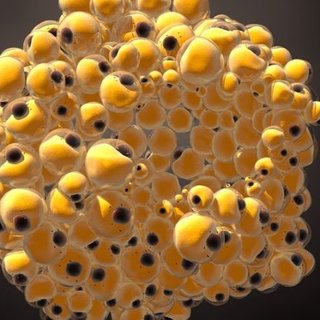August 11, 20193 min read, 592 words
Published: August 11, 2019 | 3 min read, 592 words
Researchers have been able to coax human breast cells to turn into fat cells in a new proof-of-concept study in mice.To achieve this feat, the team exploited a weird pathway that metastasising cancer cells have; their results are just a first step, but it's a truly promising appr...
CRITIC REVIEWS
Credible
August 11, 2019
The piece purports to be accessible to the layman in terms of the nomenclature but prospective readers may find some difficulty with the terminology. Additionally, the author takes some liberties insofar as speculation is concerned. Also, some readers may, based on the title of the article, assume something more expository. Some may find the article interesting while others may come away from having read it as having been somewhat mislead when one considers the declarative nature of the title.
August 11, 2019
PUBLIC REVIEWS
Investigative
August 11, 2019
The article doesn't inflate the promise of the new therapy and places it into a well laid out path forward for clinical study. While the article is short on technical detail, it is written so that the average reader can make sense of the technology and understand its potential for improving cancer treatment outcomes.
August 11, 2019
Investigative
August 11, 2019
The article covers the treatment in layman's terms, and describes the efficacy and prospects of the treatment.
August 11, 2019
Well Sourced
August 11, 2019
Interesting result if repeated and extended.
There's a logical hole in the article ... but not necesarily in the work it describes.
The author states: "Rosiglitazone was less important, but in combination with trametinib, it also helped the stem cells convert into fat cells."
So we are led to believe that trametinib is the more inportant of the two
compunds in the chemical "cocktail" employed.
Later it is revealed that both compounds are already FDA approved.
This leaves several questions hanging:
1) For what use was trametinib approved?
2) In that approval how was trametinib thought to be acting:
to induce an EMT? a MET? Something related to the results reported
by the article or something else different?
3) Repeat 1) &2) for Rosiglitazone
4) Why did the researchers think the combination
would work better, or, at all if neither of the two worked alone?
August 11, 2019
Illogical
August 11, 2019
The article is well written in terms of explaining the physiology behind how these two drugs work in combination within the transplanted breast cancer cells in mice to prevent metastasis of the cancer cells. However, it leads the reader to believe it will be easier to get FDA approval for clinical trials in human subjects, because both of the drugs discussed in the study are already FDA approved. However, one drug, rosiglitzone, is marginally approved for use in the US to treat diabetes. It is outright banned in the European Union because of the increased incidence of stroke and heart attack associated with use of the drug. Further, it is hard to understand how the use of a blood sugar lowering drug in a non diabetic with advanced breast cancer would cause the human subject no harm. And that does not even take into consideration the possible increased risk of stroke or heart attack from use of the drug, rosiglitazone. None of the serious side effects from rosiglitazone are even mentioned in this article.
August 11, 2019
